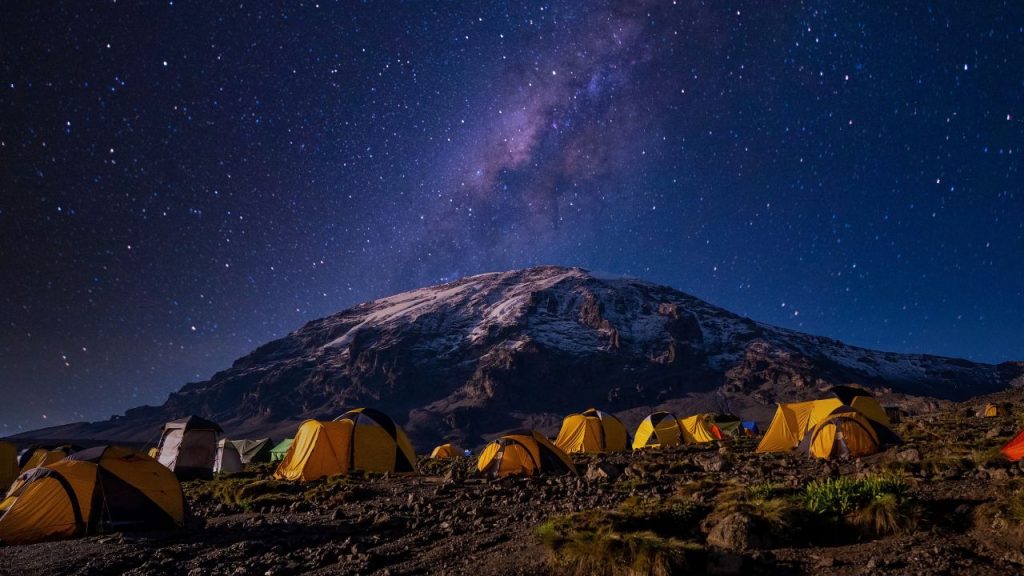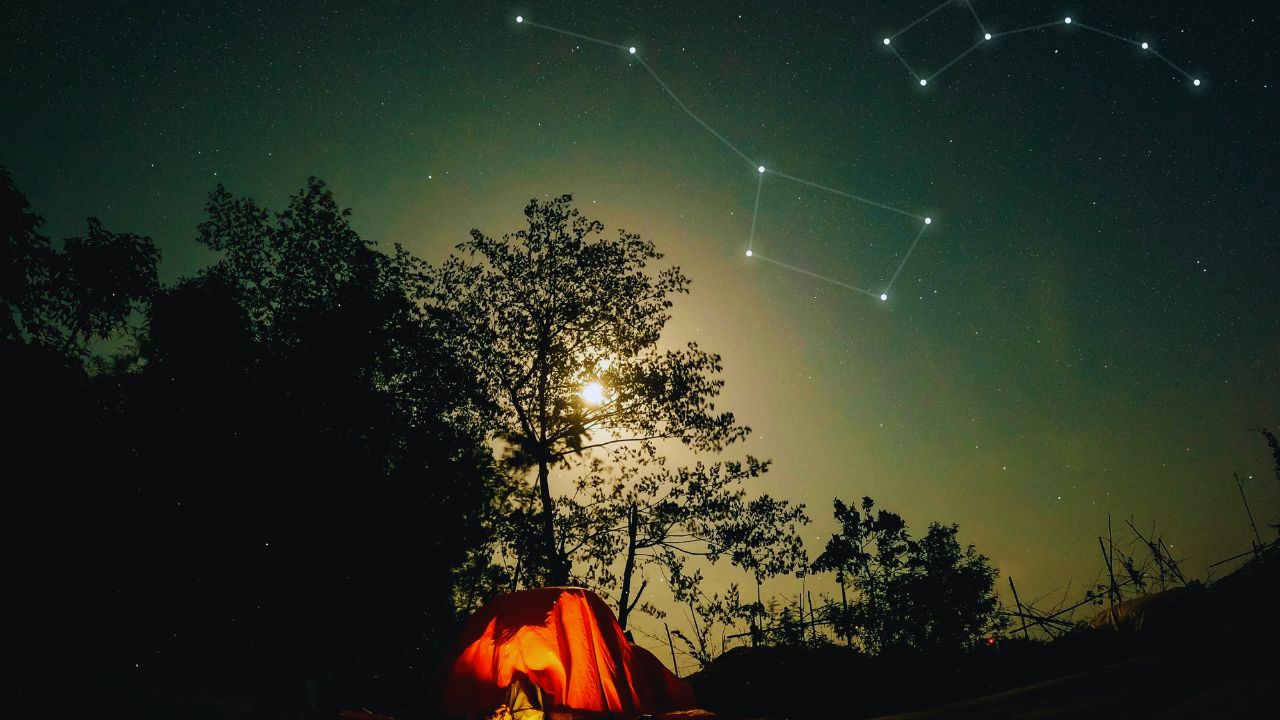As a lifelong camping enthusiast and amateur astronomer, I’ve spent countless nights gazing up at the stars, marveling at the beauty and vastness of the universe.
There’s something incredibly humbling and awe-inspiring about witnessing the celestial wonders that light up the night sky, far from the city’s light pollution.
In this article, I’ll share my tips and experiences on how to make the most of your stargazing adventures while camping.
Choosing the Perfect Campsite
The first step to an unforgettable stargazing experience is selecting the ideal campsite. Look for a location far from city lights, as light pollution can significantly diminish the visibility of stars and other celestial objects. National parks, state parks, and remote wilderness areas are often excellent choices for stargazing.
When scouting potential campsites, consider the following factors:
- Dark skies: Use light pollution maps to find areas with minimal artificial light interference.
- Open spaces: Choose a campsite with a clear view of the sky, free from obstructions like trees or mountains.
- Elevation: Higher elevations often offer clearer, crisper views of the night sky.
- Weather conditions: Check the forecast for clear skies and minimal cloud cover.
Essential Stargazing Equipment
While you can enjoy stargazing with just your naked eyes, having the right equipment can greatly enhance your experience. Here are some essential items to consider:
- Binoculars: A good pair of binoculars can help you get a closer look at stars, planets, and other celestial objects.
- Telescope: If you’re serious about stargazing, investing in a quality telescope can open up a whole new world of astronomical wonders.
- Star charts or apps: Star charts or smartphone apps can help you identify constellations, planets, and other celestial bodies.
- Red flashlight: Red light preserves your night vision, making it easier to navigate your campsite without disrupting your stargazing experience.
- Comfortable seating: A reclining camp chair or a blanket spread on the ground can provide a comfortable spot to sit or lie down while gazing at the stars.
Planning Your Stargazing Session
To make the most of your stargazing experience, it’s essential to plan ahead. Research the best times and locations for stargazing based on your camping itinerary. Some key factors to consider include:
- Moon phases: A full moon can wash out the night sky, making it harder to see fainter stars and celestial objects. Aim for dates close to the new moon for optimal viewing conditions.
- Seasonal events: Annual astronomical events like meteor showers, planetary alignments, and eclipses can add an extra level of excitement to your stargazing experience.
- Timing: The best time for stargazing is typically a few hours after sunset when the sky is fully dark.
Learning the Night Sky

One of the joys of stargazing is learning to recognize and identify the various celestial objects visible in the night sky. Start by familiarizing yourself with some of the most prominent constellations, such as:
- Ursa Major (The Great Bear): Contains the Big Dipper asterism, which can be used to locate the North Star.
- Orion: Easily recognizable by the three bright stars that form Orion’s Belt.
- Cassiopeia: Shaped like a “W” or “M,” depending on its orientation in the sky.
- Scorpius: Resembles a scorpion, with the bright star Antares marking its heart.
In addition to constellations, keep an eye out for planets, which often appear brighter than stars and don’t twinkle. Venus, Mars, Jupiter, and Saturn are among the easiest planets to spot with the naked eye.
Stargazing with Children
Stargazing can be a wonderful way to introduce children to the wonders of the universe and foster a lifelong interest in astronomy. Encourage their curiosity by sharing age-appropriate facts and stories about the stars and constellations.
Some fun stargazing activities for children include:
- Constellation scavenger hunts: Challenge kids to find specific constellations in the night sky.
- Star journals: Encourage children to record their observations and thoughts in a stargazing journal.
- Mythology storytelling: Share the mythological stories behind the constellations, sparking their imagination and interest in the night sky.
Remember to keep stargazing sessions short and engaging for younger children, as their attention spans may be limited.
Astrophotography for Beginners
Capturing the beauty of the night sky through photography can be a rewarding way to remember and share your stargazing experiences. While professional astrophotography can require specialized equipment and techniques, beginners can still achieve impressive results with some basic gear and knowledge.
To get started with astrophotography, you’ll need:
- A camera with manual settings: A DSLR or mirrorless camera is ideal, but even some high-end smartphones can work.
- A sturdy tripod: Essential for keeping your camera steady during long exposures.
- A wide-angle lens: A lens with a wide aperture (f/2.8 or wider) is best for capturing as much light as possible.
- A remote shutter release or timer: Helps minimize camera shake caused by manually pressing the shutter button.
Experiment with different camera settings, such as ISO, aperture, and shutter speed, to find the right balance for your desired image. Start with a high ISO (1600 or higher), a wide aperture (f/2.8 or wider), and a shutter speed of 15-30 seconds, and adjust as needed.
Preserving the Dark Sky

As a responsible stargazer and camper, it’s essential to do your part in preserving the dark sky for future generations. Light pollution not only diminishes our ability to enjoy the night sky but also has negative impacts on wildlife and ecosystems.
To help protect dark skies:
- Minimize artificial light: Use only the lighting necessary for safety and navigation, and choose dark sky-friendly fixtures that minimize glare and light trespass.
- Support dark sky initiatives: Volunteer with or donate to organizations that work to preserve dark skies, such as the International Dark-Sky Association.
- Educate others: Share your knowledge and passion for stargazing with others, and encourage them to take steps to reduce light pollution in their communities.
Stargazing Etiquette
When stargazing in shared spaces like campgrounds or observatories, it’s important to follow proper etiquette to ensure a positive experience for everyone. Some key guidelines include:
- Respect others’ space: Be mindful of other stargazers and avoid shining lights or making noise that could disrupt their experience.
- Use red light: As mentioned earlier, red light preserves night vision, so use red flashlights or headlamps when navigating the campsite or observing area.
- Share the view: If you have a telescope, consider sharing it with other interested stargazers, especially children who may be seeing celestial objects for the first time.
Frequently Asked Questions
-
What time of year is best for stargazing?
While stargazing can be enjoyed year-round, the best time for observing varies depending on your location and the celestial objects you wish to see. Generally, winter months offer longer nights and clearer skies, making them ideal for stargazing. However, summer months provide the opportunity to witness special events like the Perseid meteor shower in August.
-
Do I need to buy an expensive telescope for stargazing?
No, you don’t need an expensive telescope to enjoy stargazing. In fact, many celestial objects can be observed with the naked eye or a simple pair of binoculars. If you do decide to invest in a telescope, consider your budget, interests, and level of experience before making a purchase.
-
How do I find the North Star?
The North Star, also known as Polaris, can be located using the Big Dipper asterism. Find the two stars at the outer edge of the Big Dipper’s bowl, and draw an imaginary line connecting them. Extend this line about five times the distance between the two stars, and you’ll find Polaris, which marks the end of the handle of the Little Dipper.
-
Can I stargaze during a full moon?
Yes, you can stargaze during a full moon, but the bright moonlight will wash out fainter stars and celestial objects, making them harder to see. However, a full moon can be a fascinating subject for observation and photography in its own right, with its craters and maria (lunar “seas”) clearly visible.
-
What should I do if I see a shooting star?
Shooting stars, or meteors, are a thrilling sight during stargazing. If you’re lucky enough to spot one, simply enjoy the moment! You can make a wish if you like, or try to trace the meteor’s path back to its origin, which can help you identify the associated meteor shower if one is active.
Conclusion
Stargazing while camping is an enchanting and enriching experience that connects us with the wonders of the universe. By choosing the perfect campsite, equipping ourselves with the right gear, planning our stargazing sessions, and learning about the night sky, we can immerse ourselves in the beauty and mystery of the cosmos.
Whether you’re a seasoned astronomer or a curious beginner, stargazing has something to offer everyone. It’s a chance to step away from the distractions of daily life, embrace the serenity of nature, and ponder our place in the grand scheme of the universe.
As you embark on your stargazing adventures, remember to be a responsible camper and stargazer. Minimize your impact on the environment, respect others’ experiences, and do your part to preserve dark skies for generations to come.
So, the next time you find yourself under a blanket of stars, take a moment to appreciate the incredible vastness and beauty that surrounds us. Let the night sky ignite your curiosity, fuel your imagination, and inspire you to explore the cosmos, one camping trip at a time. Happy stargazing!

Hi there! I’m John W. Perkins writer and Founder howmp.com. As a passionate outdoorsman and travel enthusiast, I’ve made it my mission to share my experiences and knowledge with fellow adventurers like you.

